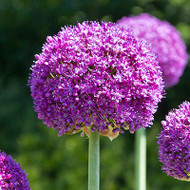There are between 800 and 1000 different species within the genus Allium, making it one of the largest genera in the plant world. They range from the edible - onions, garlic and leeks - through to the impressive ornamental drumstick varieties, producing huge flowers atop strong 1.5m stems. All (except one rogue outlier from South Africa) are native to the Northern Hemisphere, concentrated either in Central Asia or in western North America. We’ll concentrate on the ornamental species and hybrids, all superb bulbs for the garden border or growing in a pot, adding colour and architectural structure through spring and early summer.
General growing conditions:
Almost all alliums love a sunny position, in relatively free-draining soil. If planting in pots, use a soil-based compost such as John Innes No2, and add either 25% washed grit or Vermiculite to make such drainage is adequate. Remember that once in growth, such a well-draining compost will mean the bulbs will require regular watering in the spring.
In a border, it is an excellent idea to add a couple of centimetres of grit to the bottom of the planting hole, placing the bulb on top. This reduces the risk of basal rot – a soil-borne fungal disease which thrives in damp or waterlogged soil, and causes at best poor stunted growth and at worst complete rotting of the bulb over the winter.
Most alliums don’t like too much competition from neighbouring plants, especially when in full foliage. Try to pick neighbouring plants which are slightly later into growth, or keep them pruned back until the allium foliage starts to die-back.
There are a couple of notable exceptions to the general rule of dry and sunny conditions. Allium ursinum – wild garlic, also known as ramsons - flourish in relatively damp shade. Often found near streams, it said they were spread by Roman soldiers who placed the bulbs in their sandals for their natural antibacterial properties. Allium siculum (also known as Nectaroscordum siculum) will also do well in shade.
As for feeding, generally avoid using any fertiliser which includes nitrogen. This tends to promote lush green foliage at the expense of flower. A small amount of bonemeal, either on planting or as a top dressing in early spring, will encourage the root growth necessary for the bulbs to flower well this year, and to replenish its resources to flower again the following year.
Alliums for beginners:
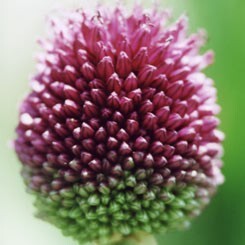
A. sphaerocephalon is one of the easiest of all – producing masses on reddish-purple flattened flower heads in July and August. It’s one of the last alliums to flower, and the flowers are produced above delicate whippy stems approx. 60cm tall which look fantastic in between smaller summer flowering herbaceous such as geums.
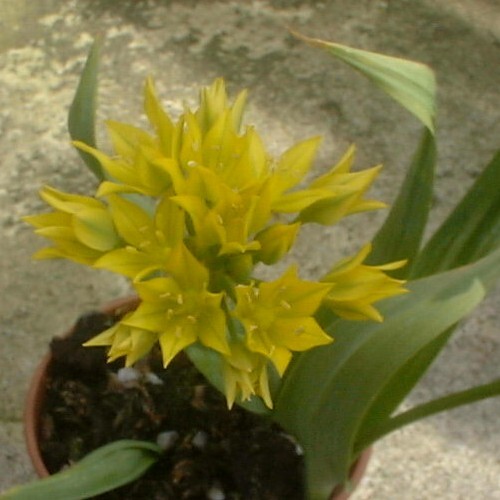
A. moly - another smaller allium, reaching only 30cm or so, with attractive grey-green leaves and buttercup yellow flowers. Naturalises well.
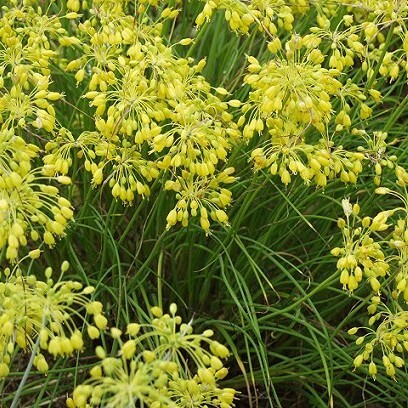
A. flavum flavum – loose flowerheads with pendant golden-yellow flowers held on wiry stems above grey-blue foliage. Utterly charming at the front of a border.
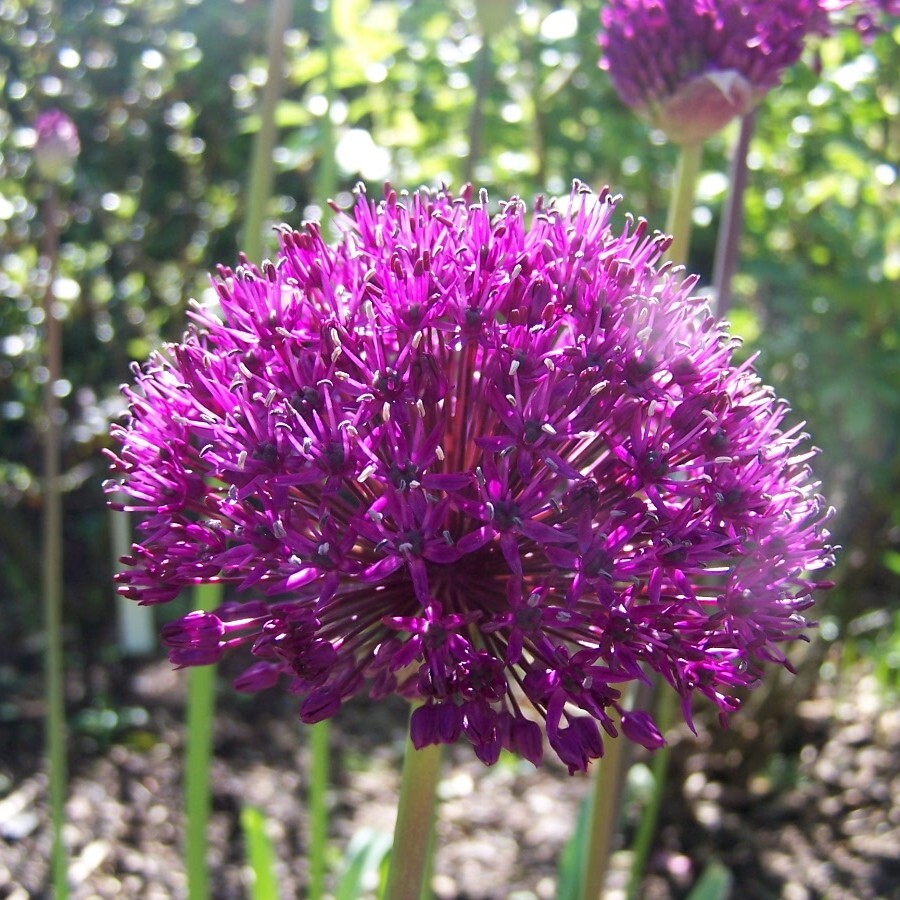
A. hollandicum ‘Purple Sensation’ – probably the best known of the drumstick alliums, and for good reason. It’s very easy to grow, will gradually increase year after year, and the deep purple umbels of flowers in May look superb planted in clumps or dotted through herbaceous border to provide structure and vertical accents.
Alliums for containers:
You can grow almost any allium in a pot, but with many the strappy foliage starts to yellow and die-back just before the flower stems are produced. In a border neighbouring plants will help disguise this, but in a pot it can spoil the effect. Luckily there are a few species which produce very decorative foliage which persists into flowering, so are perfect for a pot (especially useful if your garden soil is heavy or prone to water-logging).
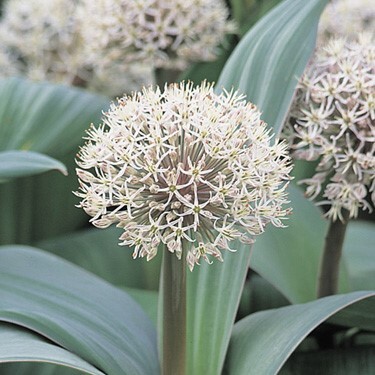
A. karataviense is a dwarf allium which produces broad, glaucous leaves, almost host-like in appearance, which persist through to set off the round white flower heads. The form ‘Red Giant’ has, as the name suggests, large reddish-purple drumstick flowers which sit 15cm above the dramatic foliage.
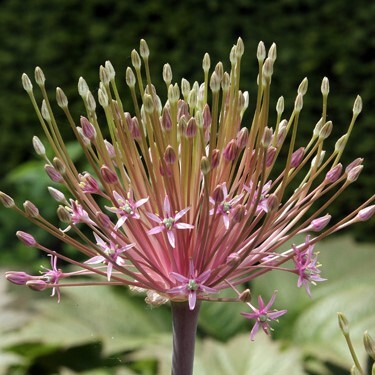
A. schubertii is another old favourite, and great in a pot or the border. The flowerheads, looking like an exploding firework, are wonderful for flower-arranging either fresh or dried.
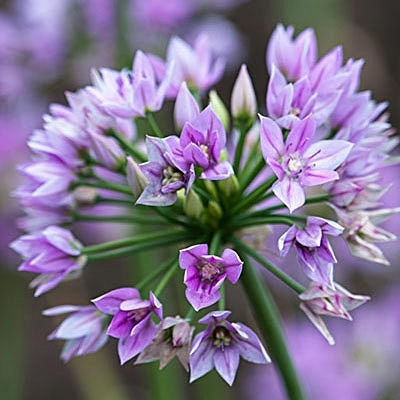
A. ‘Eros’ is a selected form of A. unifolium and again looks wonderful in containers, where the delicate, airy flowerheads can be enjoyed close up. A choice bulb to go for if you want to ‘lasagne’ plant, planting different bulbs in layers to prolong the season.
Drumstick varieties:
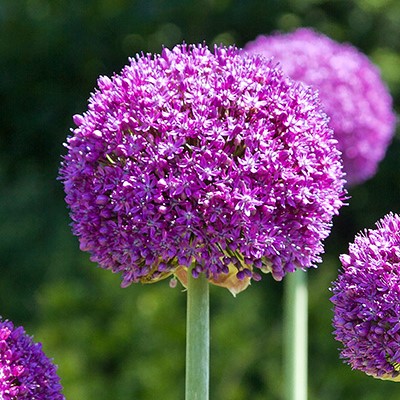
A. Ambassador – large, deep mauve-purple drumsticks held on strong stems. A fantastic choice for adding height to a border. Plant in between roses for flower just before the roses come into bloom.
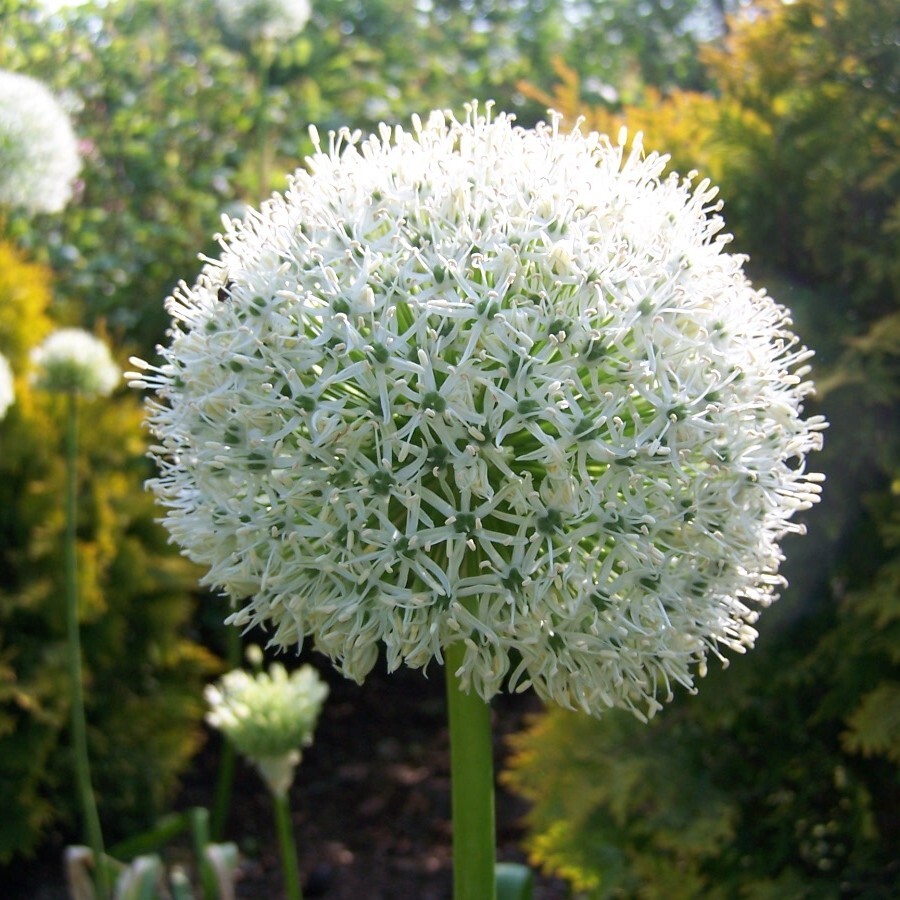
A. Mount Everest – probably the best of the large white varieties – use sparingly in between the smaller A. ‘Purple Sensation’ for a stunning display in May and early June.
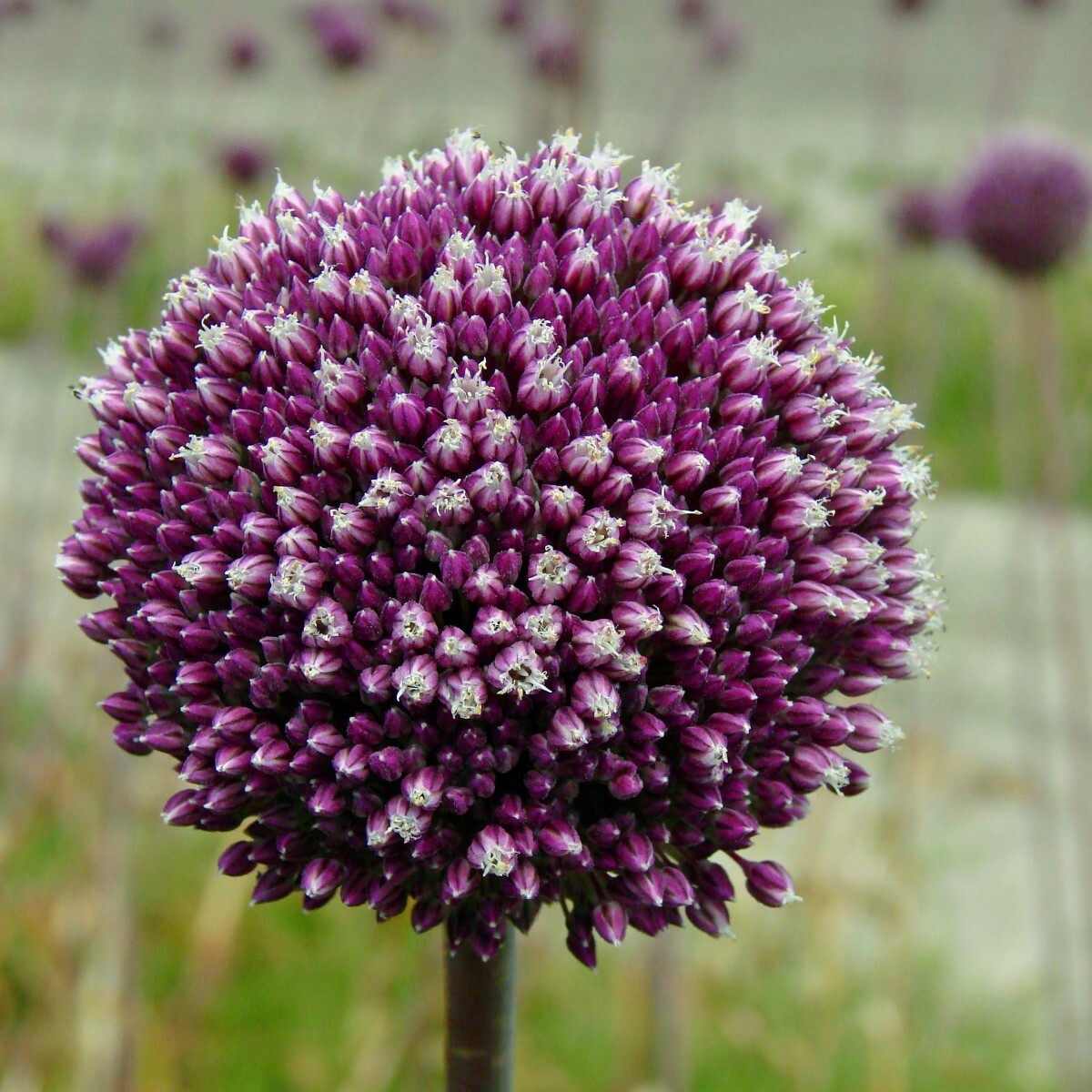
A. Summer Drummer – one of the tallest of all, the flower stems can reach up to 1.5m tall, and are topped with dense purple and white two-tone flowers.

